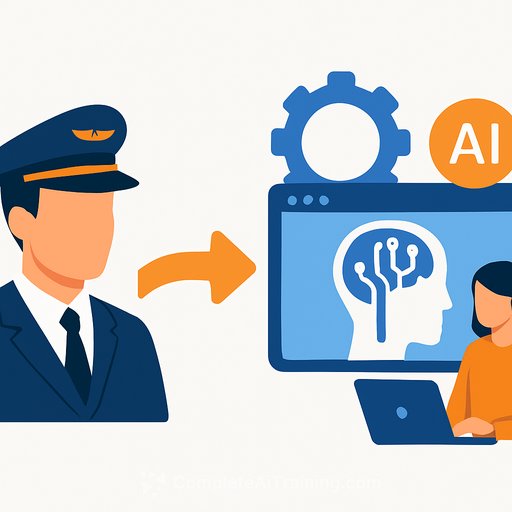Agentic AI moves from pilot to production in asset management
Franklin Templeton has partnered with Wand AI to deploy agentic AI across its global platform. What started as small pilots has shifted to live systems embedded in investment processes, using Wand's Autonomous Workforce and Agent Management stack.
The goal is simple: faster, better decisions with tight control. As Vasundhara Chetluru, Head of AI Platform at Franklin Templeton, put it, "With strong governance in place, we are demonstrating that AI can deliver secure, scalable, and measurable value."
Wand AI's CEO, Rotem Alaluf, framed the vision: AI agents should collaborate with human teams and operate at scale in regulated environments-when they're governed, orchestrated, and deployed as a unified workforce.
What managers should take from this
- Agentic AI is moving from experiments to enterprise operations.
- Value concentrates in high-stakes workflows: research, data synthesis, risk checks, and operations.
- Governance is a feature, not an afterthought. Auditability, controls, and clear decision rights win buy-in.
- Scale comes after proof. Start where impact is undeniable, then expand across desks and functions.
Inside Franklin Templeton's rollout
Early work focused on investment teams where the ROI is obvious. Now, the plan is to extend intelligent agents into more departments through 2026, with strict oversight, compliance, and risk control.
- Data-driven research: agents summarize filings, earnings, and macro data; flag shifts and anomalies.
- Decision support: agents produce scenario analysis and structured briefings for investment committees.
- Operational lift: agents handle document prep, data QA, and routine follow-ups so teams can focus on judgment.
The wider signal: Goldman Sachs is scaling AI
Goldman Sachs reports generative AI could add trillions in long-term value and lift US labor productivity by up to 15%. The firm launched an internal AI assistant to draft content, analyze data, and summarize complex documents-freeing teams to focus on higher-value work.
CEO David Solomon is clear: the opportunity is huge, but there will be winners and losers. Some investments won't pay back. The shift is real-GS now employs around 13,000 engineers, showing how roles evolve when technology becomes core to the business.
Governance that holds up under audit
- Define decision rights: which calls do agents make vs. recommend? Where is explicit human approval required?
- Model risk management: version control, evaluations, and incident playbooks tied to materiality thresholds.
- Data controls: minimize sensitive data exposure, log access, and enforce retention policies.
- Compliance by design: capture prompts, outputs, and approvals for full audit trails.
- Production guardrails: rate limits, content filters, and kill switches for abnormal behavior.
- Independent testing: red-team agents and measure failure modes before scale-up.
- Align with recognized frameworks like the NIST AI Risk Management Framework.
A practical 90-day plan to get moving
- Week 1-2: Pick 2-3 workflows with clear ROI (e.g., research summaries, monitoring, document synthesis). Define decision rights.
- Week 3-4: Stand up an agent control plane (orchestration, permissions, logging, evaluation). Set KPIs and baselines.
- Week 5-6: Build evaluations. Red-team prompts, data boundaries, and escalation rules.
- Week 7-8: Go live with a small user group. Collect feedback daily. Tighten prompts and playbooks.
- Week 9-10: Expand to adjacent teams. Automate reporting. Lock in audit trails.
- Week 11-12: Present results with before/after metrics and a scale plan tied to risk controls.
Metrics that matter to leadership
- Cycle time: research brief creation time and time-to-decision.
- Coverage: companies/sectors analyzed per analyst per week.
- Quality: error rates, compliance findings, rework hours.
- Throughput: tasks completed per FTE and SLA adherence.
- Cost-to-alpha ratio: operational cost per qualified thesis or signal.
What to watch next
Franklin Templeton's plan to broaden agent deployment in 2026 signals where the industry is headed: multi-agent systems embedded in daily workflows, governed like any critical system, measured like any P&L line item.
The firms that win won't just "use AI." They'll manage AI like a workforce-clear roles, clear oversight, clear results.
Upskill your team and standardize your stack
If you're building internal capability, start with focused training and vetted toolsets for finance teams. This resource list is a helpful shortcut:
Your membership also unlocks:






